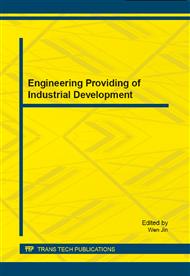p.148
p.153
p.159
p.169
p.176
p.183
p.190
p.196
p.201
The Uncertainty Analysis of Microwave Resonant Cavity System for Wetness Measurement
Abstract:
Steam pressure and resonant frequency of microwave cavity are important measure parameters of microwave wetness measurement system. The measuring precision of pressure and frequency directly affect the accuracy of wetness measurement. This paper takes different pressure and wetness of steam as example to analyze the parameter uncertainty of measurement relationship and deduces standard uncertainty of wetness measurement. The system comprehensive uncertainty is identified, when the parameters measurement, cavity heat expansion, sampling error, sedimentary water film and so on are considered. The result shows that the system uncertainty is less than 0.004%. The system uncertainty introduced by pressure measurement is small and can be neglected, but the system uncertainty from frequency measurement has a great effect. The precisely measurement of resonance frequency is key to ensure the accuracy of the system.
Info:
Periodical:
Pages:
176-182
Citation:
Online since:
September 2014
Authors:
Price:
Сopyright:
© 2014 Trans Tech Publications Ltd. All Rights Reserved
Share:
Citation:


